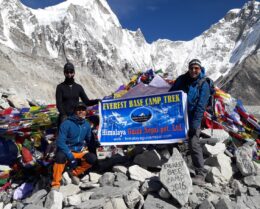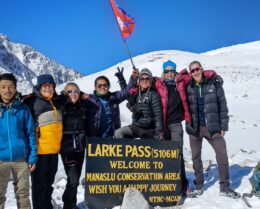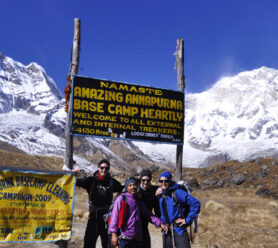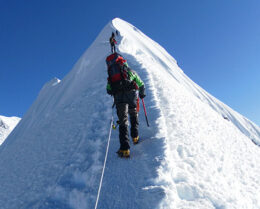Is the Arun Valley the deepest in the World? -Uncover the Depths
PUBLISHED ON 1 February, 2024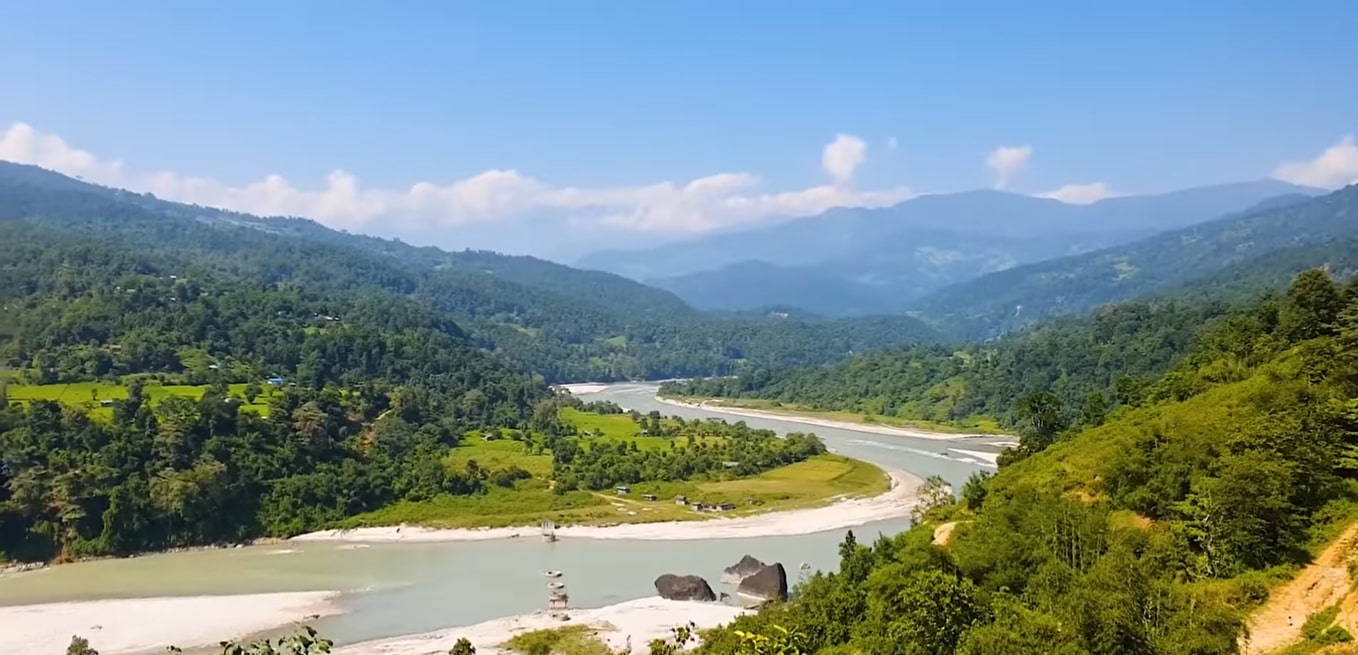
The Arun Valley, nestled in the breathtaking landscape of Nepal, is an area of terrific natural splendor and cultural richness. Situated in the jap part of Nepal, the Arun Valley Trek is renowned for its beautiful vistas, numerous ecosystems, and precise cultural and historical past.
The Arun Valley is between the two national parks: Sagarmatha National Park and Makalu Barun National Park. The valley is regarded as the world’s deepest valley. Numerous endangered creatures, butterflies, and birds can be found in the Arun Valley. This valley is home to over 800 kinds of butterflies and over 650 species of birds.
- The breathtaking, desolate path that winds across the secluded Arun Valley.
- Camp in a tent and enjoy sleeping beneath a starry sky.
- views of the peaks in the Everest region and Makalu (8,463 meters/27,766 feet).
- An easy travel ideal for hikers of all ages.
- Spend time with the kind people of Sherpa, Rai, and Limbu.
Geography and Landscape:
The Arun Valley is characterized by its rugged terrain, lush greenery, and towering peaks. Carved with the aid of the strong Arun River, which is considered one of the most important trans-Himalayan rivers, the valley boasts dramatic gorges, cascading waterfalls, and verdant forests.
The valley is flanked by the majestic peaks of the Makalu-Barun National Park, together with the towering Mount Makalu, the 5th highest mountain in the world. The combination of high Himalayan peaks and deep river valleys makes the Arun Valley a haven for adventurers and nature enthusiasts alike.
Biodiversity:
The Arun Valley is famed for its rich biodiversity. The location is home to a diverse array of plants and fauna, consisting of rare and endangered species. The Makalu-Barun National Park, which encompasses an awful lot of the valley, is a protected region acknowledged for its pristine desert and extremely good biodiversity.
Visitors to the Arun Valley can come upon loads of wildlife, such as elusive species which include the snow leopard, red panda, Himalayan tahr, and a mess of chook species.
Cultural Heritage:
In addition to its natural wonders, the Arun Valley is also steeped in cultural heritage. The valley is inhabited by various ethnic communities, including Sherpas, Rais, Limbus, and others, each with their specific traditions and customs. Visitors to the valley have the opportunity to enjoy the traditional Nepali lifestyle firsthand, from colorful galas and religious ceremonies to warm hospitality and scrumptious nearby delicacies.
Throughout the valley, you’ll be able to discover conventional villages embellished with intricately carved wooden houses, historic monasteries, and sacred temples, supplying glimpses into Nepal’s rich cultural tapestry.
Trekking and Adventure:
The Arun Valley is a paradise for trekkers and journey seekers. The location gives a wide variety of trekking routes, from highly mild hikes via terraced fields and quaint villages to hard expeditions into the heart of the Himalayas.
Popular trekking routes inside the Arun Valley consist of the Arun Valley Trek, which takes travelers via picturesque villages, rhododendron forests, and alpine meadows with beautiful views of the encompassing mountains. For greater skilled trekkers, the Makalu Base Camp Trek offers an exciting adventure amidst towering peaks and glacial valleys.
Sustainable Tourism:
As a hobby in the Arun Valley grows, there is a concerted effort to promote sustainable tourism practices in the location. Local groups are actively concerned with ecotourism projects geared toward keeping the valley’s natural environment and cultural heritage whilst imparting financial possibilities for residents.
Lodges and guesthouses operated by way of local communities provide site visitors a threat to enjoy true Nepali hospitality even as supporting sustainable improvement in the area.
The Difficulty of Arun Valley Trek
Traveling to the Arun Valley in Nepal gives each challenge and rewards, making it an experience suited for adventurous and intrepid tourists. Here are some of the elements contributing to the difficulty of traveling to the Arun Valley:
Remote Location: The Arun Valley is located in the eastern part of Nepal, far from principal cities and transportation hubs. Accessing the valley frequently requires a couple of modes of transportation, along with flights, buses, and from time to time even hiking, depending on the specific vacation spot in the valley.
Rugged Terrain: The terrain within the Arun Valley is rugged and mountainous, characterized by steep slopes, deep river gorges, and dense forests. Trekking and trekking routes within the vicinity can be challenging, with elevation gains and losses, slim trails, and unpredictable weather situations.
Limited Infrastructure: Infrastructure within the Arun Valley is restrained, especially in greater remote areas. While primary services such as guesthouses and teahouses are to be had along famous trekking routes, centers can be rudimentary, and services together with energy and hot water may be intermittent.
Altitude: Much of the Arun Valley lies at excessive altitude, with hiking routes accomplishing elevations of over 4,000 meters (13,000 ft). Altitude sickness may be a situation for travelers who aren’t acclimatized to high elevations, requiring cautious planning and slow ascent to reduce the risk of altitude-associated ailments.
Limited Services: Services along with scientific facilities, telecommunications, and emergency help can be restricted or unavailable in far-flung areas of the Arun Valley. Travelers ought to be prepared to be self-sufficient and carry essential elements, along with first resource kits, water purification pills, and communique devices.
Weather Conditions: Weather situations in the Arun Valley can be unpredictable, especially throughout the monsoon season (June to September) and the winter months (December to February). Heavy rain, landslides, snowfall, and fog can impact journey plans and make hiking extra challenging.
Despite those demanding situations, traveling to the Arun Valley gives remarkable possibilities to explore the pristine wasteland, revel in the conventional Nepali lifestyle, and witness some of the arena’s most marvelous mountain surroundings.
With cautious planning, suitable tools, and a spirit of adventure, tourists can triumph over the difficulties of journeying to the Arun Valley and revel in a memorable adventure inside the coronary heart of the Himalayas.
Best Time for Arun Valley Travel
The satisfactory time for a tour to the Arun Valley in Nepal in large part relies upon your choices and the activities you plan to undertake. However, there are normally principal seasons that are considered ideal for traveling the Arun Valley:
Spring (March to May):
Spring is one of the most popular instances to visit the Arun Valley. During this season, the climate is enormously slight and solid, with clear skies and hotter temperatures. The hillsides come alive with colorful blooms as rhododendrons and different wildflowers carpet the panorama, growing a beautiful backdrop for trekking and outdoor activities. Spring is likewise an incredible time for birdwatching, as migratory birds go back to the vicinity.
Autumn (September to November):
Autumn is another ideal time to visit the Arun Valley. The climate is usually dry and clear, presenting exceptional visibility of the encircling mountains and valleys. The temperatures are snug, making it ideal for hiking and different outdoor adventures.
Autumn is also the peak trekking season in Nepal, so count on famous trails to be busier at some stage during this time. However, the lovely scenery and favorable climate make it well worth the go.
Both spring and autumn are taken into consideration the exceptional times for hiking and outdoor sports within the Arun Valley. However, it is critical to note that climate situations in mountainous areas may be unpredictable, so it’s always an awesome idea to check climate forecasts and be organized for modifications in situations.
Additionally, if you prefer to keep away from crowds, recall traveling in the course of the shoulder seasons of late spring or early autumn while the weather continues to be favorable, however, the trails are less crowded.
Different attractions of Arun Valley Travel

The Arun Valley in Nepal is a location blessed with an abundance of herbal and cultural attractions that draw travelers from around the arena. Here are some of the pinnacle sights of the Arun Valley:
Scenic Beauty: The Arun Valley is famed for its breathtaking herbal splendor. Surrounded with the aid of towering Himalayan peaks, lush forests, and cascading waterfalls, the valley gives stunning vistas at every flip. Travelers can experience panoramic views of Mount Makalu, the fifth-highest mountain in the world, in addition to different peaks which include Kanchenjunga and Everest.
Makalu-Barun National Park: Much of the Arun Valley is encompassed by the Makalu-Barun National Park, a covered place regarded for its pristine barren region and exceptional biodiversity. The park is home to a huge sort of vegetation and fauna, inclusive of uncommon and endangered species along with the snow leopard, purple panda, Himalayan tahr, and numerous chicken species.
Trekking Routes: The Arun Valley offers several pleasant worthwhile trekking routes in Nepal. From fantastically easy hikes through terraced fields and conventional villages to hard expeditions into the coronary heart of the Himalayas, there are options for trekkers of all stages. Popular treks inside the region consist of the Arun Valley Trek, Makalu Base Camp Trek, and the Three Passes Trek.
Cultural Heritage: The Arun Valley is inhabited via the use of several ethnic businesses, every with its private precise traditions and customs. Visitors have the opportunity to revel in the traditional Nepali lifestyle firsthand, from colorful fairs and religious ceremonies to warmth, hospitality, and delicious nearby cuisine. The valley is dotted with conventional villages, historic monasteries, and sacred temples, offering insight into Nepal’s rich cultural history.
Adventure Activities: Besides trekking, the Arun Valley gives various journey sports for thrill-seekers. Rafting and kayaking fans can address the white-water rapids of the Arun River, while mountain bikers can discover rugged trails through the valley’s picturesque landscapes. Wildlife safaris, birdwatching tours, and camping expeditions are also famous alternatives for outside adventurers.
Photography Opportunities: With its lovely natural surroundings, diverse flora and fauna, and colorful cultural and historical past, the Arun Valley gives limitless opportunities for photographers. From majestic mountain panoramas to intimate pics of nearby villagers, every corner of the valley affords a charming undertaking for snapshots.
Overall, the Arun Valley is a vacation spot that appeals to tourists searching out journeys, natural beauty, and cultural immersion. Whether hiking via some distance off mountain trails, exploring traditional villages, or in reality soaking in the awe-inspiring scenery, traffic to the Arun Valley is positive to be enhanced through its charms.
Safety of the Arun Valley Tour
Traveling to the Arun Valley in Nepal can commonly be considered steady, however, it’s far more important to be privy to functionality dangers and take critical precautions. Here are a few factors to keep in mind regarding protection:
Altitude Sickness: The Arun Valley is positioned in a mountainous place, and plenty of trekking routes attain excessive elevations. Altitude contamination can be a trouble for tourists who ascend too rapidly without allowing their bodies time to acclimatize.
It’s crucial to acclimatize nicely by ascending often, staying hydrated, and being aware of signs and symptoms of altitude illness, consisting of headache, nausea, and dizziness. If signs boom, it is critical to descend to a decreased altitude without delay.
Natural Hazards: The mountainous terrain of the Arun Valley is at risk of herbal risks together with landslides, rockfalls, and avalanches, especially at some stage in the monsoon season (June to September) and after heavy rainfall or blizzards. Travelers need to be careful at the same time as trekking in areas at risk of such dangers and live informed about climate conditions and local advisories.
Health Risks: While the danger of contracting intense ailments within the Arun Valley is exceedingly low, travelers want to take precautions to prevent commonplace travel-related ailments together with traveler’s diarrhea, insect bites, and sunburn. It’s advisable to drink the simplest bottled or purified water, use insect repellent to save you from mosquito bites and defend in opposition to solar publicity with sunscreen and appropriate garb.
Remote Locations: Some elements of the Arun Valley are remote and can have restricted entry to medical centers and emergency services. Travelers ought to be prepared to be self-sufficient and bring vital substances, which include a primary beneficial aid kit, medications, and communique gadgets. It’s additionally a top-notch idea to proportion your journey plans with a sincere person and bring emergency touch data.
Overall, journeying to the Arun Valley can be a profitable and enriching revel in, but it’s critical to be aware of ability risks and take vital precautions to ensure a secure and fun adventure. By staying knowledgeable, being prepared, and exercising caution, tourists can minimize dangers and make the most of their time in this cute Himalayan vicinity.
Detailed Itinerary for Arun Valley Trek
Day 1: Kathmandu to Tumlingtar (Flight)
Fly from Kathmandu to Tumlingtar, a city placed close to the starting point of the Arun Valley trek. Upon arrival, meet your hiking manual and group, and transfer to your accommodation. Spend the relaxation of the day exploring Tumlingtar and getting equipped for the trek beforehand.
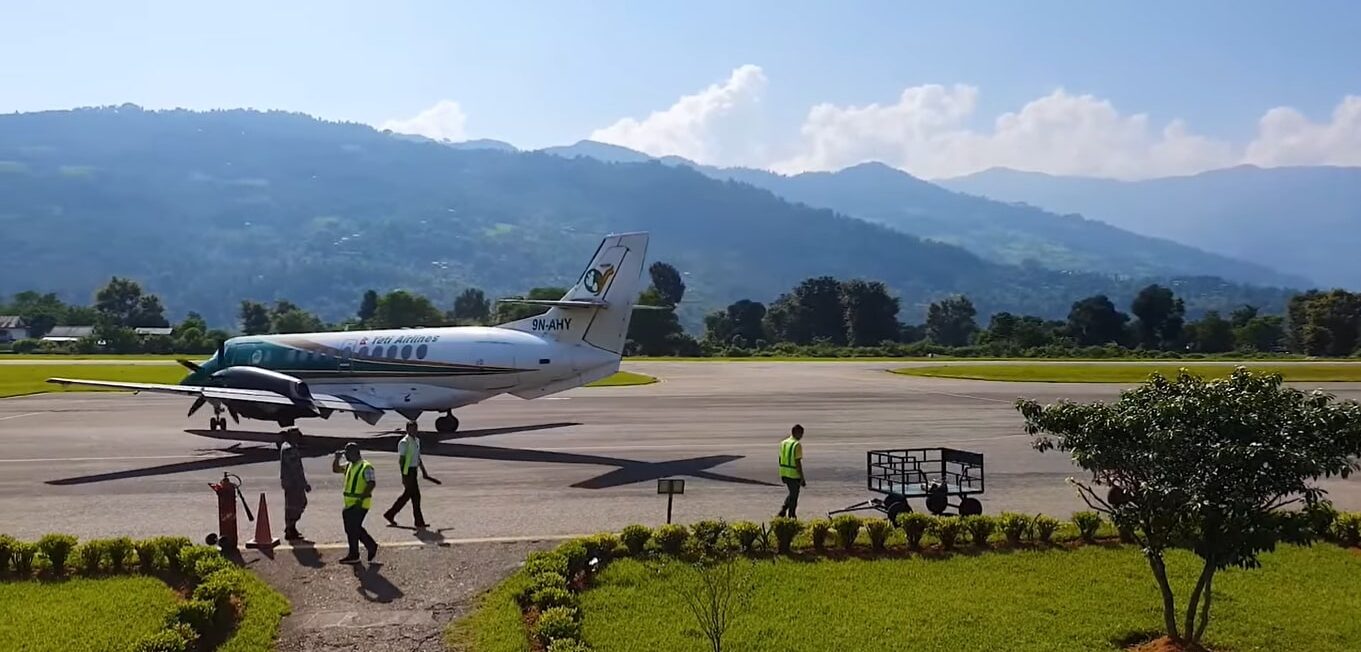
Day 2: Tumlingtar to Kartike Ghat
Trek from Tumlingtar to Kartike Ghat, a small village located along the banks of the Arun River. Enjoy scenic perspectives of terraced fields, forests, and conventional villages along the way. Overnight stay at a guesthouse in Kartike Ghat.
Day 3: Kartike Ghat to Gothey
Continue hiking alongside the Arun River, passing through lush forests and picturesque hamlets. Arrive in Gothey, a charming village with traditional Sherpa homes and stunning mountain perspectives. Overnight live at a guesthouse in Gothey.
Day 4: Gothey to Salpa Phedi
Trek from Gothey to Salpa Phedi, a small agreement nestled at the bottom of Salpa Bhanjyang Pass. Along the way, traverse rhododendron forests and come upon breathtaking mountain scenery. Overnight live at a guesthouse in Salpa Phedi.
Day 5: Salpa Phedi to Sanam
Begin the ascent to Salpa Bhanjyang Pass, crossing over the mountain pass at an elevation of approximately 3,350 meters. Descend into the picturesque village of Sanam, surrounded by terraced fields and rhododendron forests. Overnight stay at a guesthouse in Sanam.
Day 6: Sanam to Bung
Trek from Sanam to Bung, a traditional Sherpa village known for its hospitality and cultural background. Explore the village and engage with local citizens to learn about their manner of life. Overnight stay at a guesthouse in Bung.
Day 7: Bung to Tumlingtar
Trek from Bung to Tumlingtar, retracing your steps alongside the Arun River valley. Enjoy the final views of the majestic Himalayan peaks before attaining Tumlingtar. Overnight live at a guesthouse in Tumlingtar.
Day 8: Tumlingtar to Kathmandu (Flight)
Fly from Tumlingtar again to Kathmandu, marking the end of your Arun Valley trek. Spend the day exploring Kathmandu or enjoying it before your departure.
Conclusion
Nature enthusiasts should consider the Arun Valley Trek. Arun Valley is the world’s deepest at 8,391 meters. There are 440 different kinds of birds in Makalu Barun National Park, including two endemic species, the olive ground babbler and the spiny babbler, and 14 extinct species.
There are 3,000 flowering plants, including 32 varieties of rhododendrons 47 species of orchids, 150 species of butterflies, and 4 species of fish. The red panda, musk deer, and snow leopard are among the endangered mammal species on the list. The park’s twelve distinct communities are located along its rivers and rivulets.
Some similar posts:

